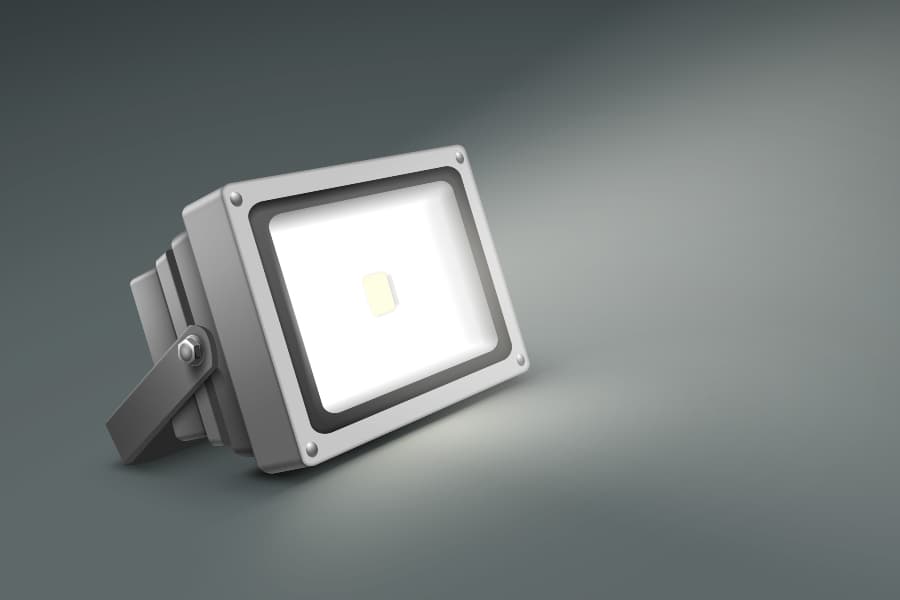
How to Choose the Right Floodlight for Your CCTV System
Motion-activated flood lights are great for lighting up driveways, pools, yards, and property in general. Ne’er-do-wells are, by default, opportunistic night creatures that are best deterred by a sudden flash of very intense light that might reveal their plans. Unfortunately, floodlights are also triggered by cats and other night critters, which could be inconvenient at times.
So, if you want to see what triggered the floodlight, you’ll need a floodlight camera that’s compatible with your pre-existing CCTV system. When choosing the right floodlight camera for your CCTV, it’s imperative to choose the product that’s compatible with your pre-existing CCTV system.
Sure, the price and other details are important factors, but it really doesn’t matter how affordable or expensive the device you bought is if it isn’t compatible with your CCTV system. So, when considering compatibility, you need to think in terms of power supply and video signal transmission.
Wired Floodlight Cameras
PoE CCTV systems have become increasingly popular and are considered a predominant choice in many CCTV installations, as they transfer both power and data through a single Ethernet cable.
If that’s the case, wired PoE cameras might be your best choice. They’re powered directly through the same cable that transmits data to your PoE NVR and will transmit data depending on how you set them up.
However, not all wired cameras are implicitly PoE devices. Some wired cameras, such as Ring Spotlight Camera Wired B0756P26HL, transmit data wirelessly, requiring only a wired power supply. Some models, like the aforementioned B0756P26HL, are powered via a plug-in adapter, while others, such as Ring Floodlight Cam Wired Plus B08F6GPQQ7, are hardwired to 120V-240V.
Solar Floodlight Cameras
The whole point of solar cameras is to eliminate the need for a continuous power supply, and thus, they rely on wireless data transmission—because if you already have a wired data transfer, why not supply the power through the same Ethernet cable?
As their name implies, these solar floodlight cameras are equipped with a miniature solar panel that converts the sunlight into power for both the camera and the floodlight. Most of them have a built-in battery that accumulates energy during sunlight and outputs when the floodlight sensor is triggered at night.
As stated, these devices transmit video data to your NVR using Wi-Fi, but some models, such as the Ring Smart Lighting Floodlight Solar B07YP9W129, connect to the Ring Bridge or Echo. Other models, such as Ring Smart Lighting Floodlight Solar B07YP9VVMM, connect to Alexa using built-in Bluetooth.
It’s also worth mentioning that these models have removable batteries which can be charged via USB if necessary. This leads us to battery-powered floodlight cameras.
Battery-Powered Floodlight Cameras
As their name implies, battery-powered cameras draw their power from either a removable and rechargeable proprietary battery pack or from generic replaceable batteries. And this powering method has some inherent advantages and drawbacks.
Battery Floodlight Cameras are exceptionally easy to install, as they don’t require any wiring or access to a power outlet. As such, they’re implicitly wireless in terms of data transfer. However, they require regular battery charging or replacement to ensure continuous operation.
Additionally, they’re not as technologically advanced or feature-rich as their solar-powered or wired cousins. This means that they’re often limited in terms of light output. Wired floodlight cameras typically output anywhere between 500 lumens (on the lower end of the price scale) to up to 5,000 lumens, though most are designed to output approx. 1,500 lumens.
Battery-powered cameras rarely go over 1,000 lumens for power conservation purposes. A good example of this is the Ring Beat Floodlights Battery B07KXBWX6F, which can output some 600 lumens. This could be an important factor in your selection process.
Other Considerations
The number of lumens a floodlight camera can output beg the following question: do you need a floodlight camera for illumination or video capture? Fewer lumens and the floodlight loses its function, and the camera won’t be able to adequately record during night time unless equipped with night vision—and most of them are.
Too many lumens and excessive light might also impede the camera’s ability to capture adequate video due to too much brightness. Luckily, some models, such as Ring Floodlight Camera Wired Black B0722R3WV5, have adjustable lights, which could solve the brightness issue.
Summary
In summary, choosing the right floodlight camera for your CCTV mostly depends on your CCTV system and your personal needs and preferences. In our guide, we laid out different types and features associated with floodlight cameras, granting you the knowledge to make an informed decision when picking out the appropriate device.
If you have any additional questions regarding floodlight cameras, contact KOA EDI by calling (866) 606-5229, or if you’d like to see more products other than the ones we suggested, visit the company’s website.